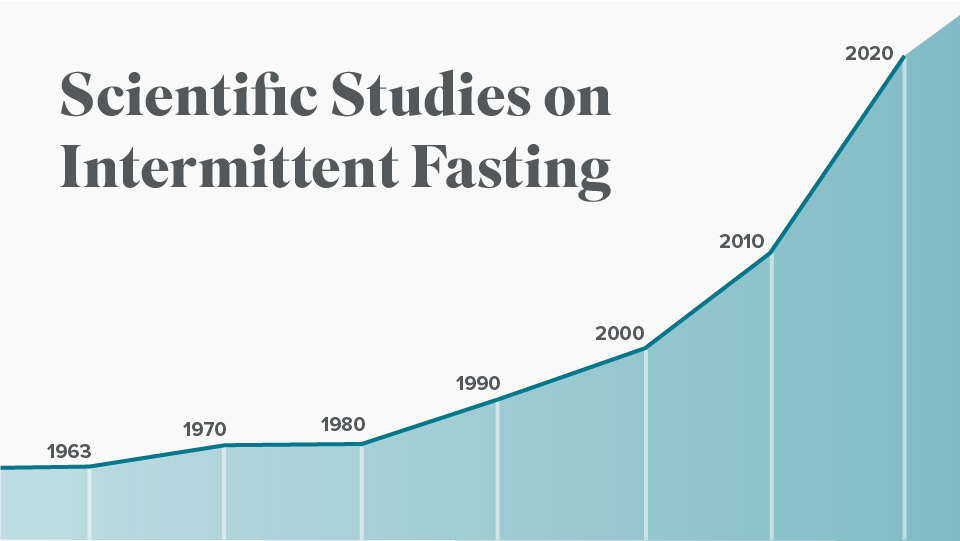Intermittent Fasting: From the Ancient Greeks to Isagenix

Calorie restriction (CR) has attracted considerable attention from the press and the scientific community. In fact, if you search the term in Pubmed—a major scientific research database—you’ll find that the number of citations in the first seven months of 2017 is almost identical to the number of citations between the years 1944-1982.
Since the seminal rat studies of Dr. Clive McCay at Cornell University in the 1930s, the benefits of CR like longer lifespans have been demonstrated in laboratory animals while short-term human studies have documents weight loss and metabolic improvements. However, many individuals seeking safe and effective weight loss find this level of daily restriction difficult to follow. The problem of compliance with CR has led many individuals to identify new approaches. One such alternative to conventional daily CR is intermittent fasting (IF).
Calorie restriction and IF have much in common; nonetheless, there are important practical and scientifically relevant distinctions (1). For example, CR is a daily reduction in caloric (energy) intake of 20-40 percent of an individual’s energy requirements (while providing adequate intake of essential nutrients). In contrast, IF refers to one or two days a week or a specified period of hours within a day, in which the individual significantly reduces their caloric intake. Another type of IF currently practiced by many individuals is alternate-day fasting (ADF), whereby normal food consumption days are alternated with fasting days.
Old and New Again
Hippocrates, Plato, and Aristotle each lauded the benefits of fasting. Moreover, virtually all religions, including Islam, Judaism, Buddhism, Christianity, and Hinduism incorporate some element of fasting within their rituals. In this cultural context, the most comprehensive studies of IF are those investigating its physiological and biochemical effects observed in Muslims during the holy month of Ramadan, where practitioners follow IF by abstaining from food from sun up until sun down (2).
Perhaps the first human investigation of its kind into IF was a study performed by the Spanish physician Eduardo Vallejo, who oversaw a three-year intervention of healthy, elderly men. He reported that subjects who followed a fasting protocol were healthier compared to others who had not fasted.
During the next 50 years, there were only scattered clinical studies investigating IF as a unique therapeutic dietary option distinct from the more straightforward CR. However, in 2005 researchers from the prestigious Pennington Biomedical Research Center in Louisiana conducted the first study evaluating ADF in a strict clinical setting (3). In this study, subjects alternated normal caloric intake days with fasting days.
These researchers reported that ADF increased fat burning and promoted weight loss. As a cautionary note, however, the authors noted that hunger did not decrease with ADF suggesting that the strategy may not be effective long term.
Modification of IF Protocols
To reduce concern for adherence to IF strategies, several researchers introduced low caloric intake on IF days. For example, in one eight-week ADF study overweight subjects who consumed 320-380 calories every other day exhibited significant weight loss, burned more fat, and had improved quality of life measures, all while complying well to the dietary protocol (4). Similarly, Dr. Krista Varady and her colleagues at the University of Illinois at Chicago reported excellent adherence in two studies evaluating health and weight loss benefits of ADF (5, 6).
A comparison between strict CR and IF has also been investigated. Two studies, one in 2011 (7) and another in 2017 (8) compared a 25 percent CR diet (less than what an average Isagenix user would restrict during a Shake Day) to IF interventions in obese individuals and generally observed that both CR or IF were equally effective for weight and fat loss accompanied by improvements in metabolic health.
The Best of CR and IF
Calorie restriction and intermittent fasting are not new to Isagenix. In fact, since the company’s founding in 2002, both CR as Shake Days and IF as Cleanse Days have been integral to the success of the Isagenix System.
This novel combination of CR and IF developed by Isagenix has currently been subjected to two independent clinical studies. In the first study, researchers at the University of Illinois at Chicago compared eight weeks of adhering to the Isagenix System to a heart-healthy diet.
What the researchers found was greater weight loss and improved measures of cardiovascular health with Isagenix (9, 10).
Following these impressive results, Isagenix funded a second study conducted by Skidmore College to further corroborate and address another crucial question: “Is weight loss with Isagenix sustainable long term?”
Indeed, in this second study a 10-week intervention with Isagenix, followed by a 52-week weight maintenance dietary component (still incorporating IF) resulted in greater, more sustained weight and fat loss, along with better maintenance of muscle mass and metabolic rate when compared to a low-calorie, heart-healthy plan (11, 12).
These clinical studies revealed two essential facts about CR- and IF-based weight loss strategies. First, Isagenix promotes safe and healthy weight loss while maintaining lean body mass, and second, continued adherence to Isagenix weight loss tools can help one maintain that weight loss long term.





